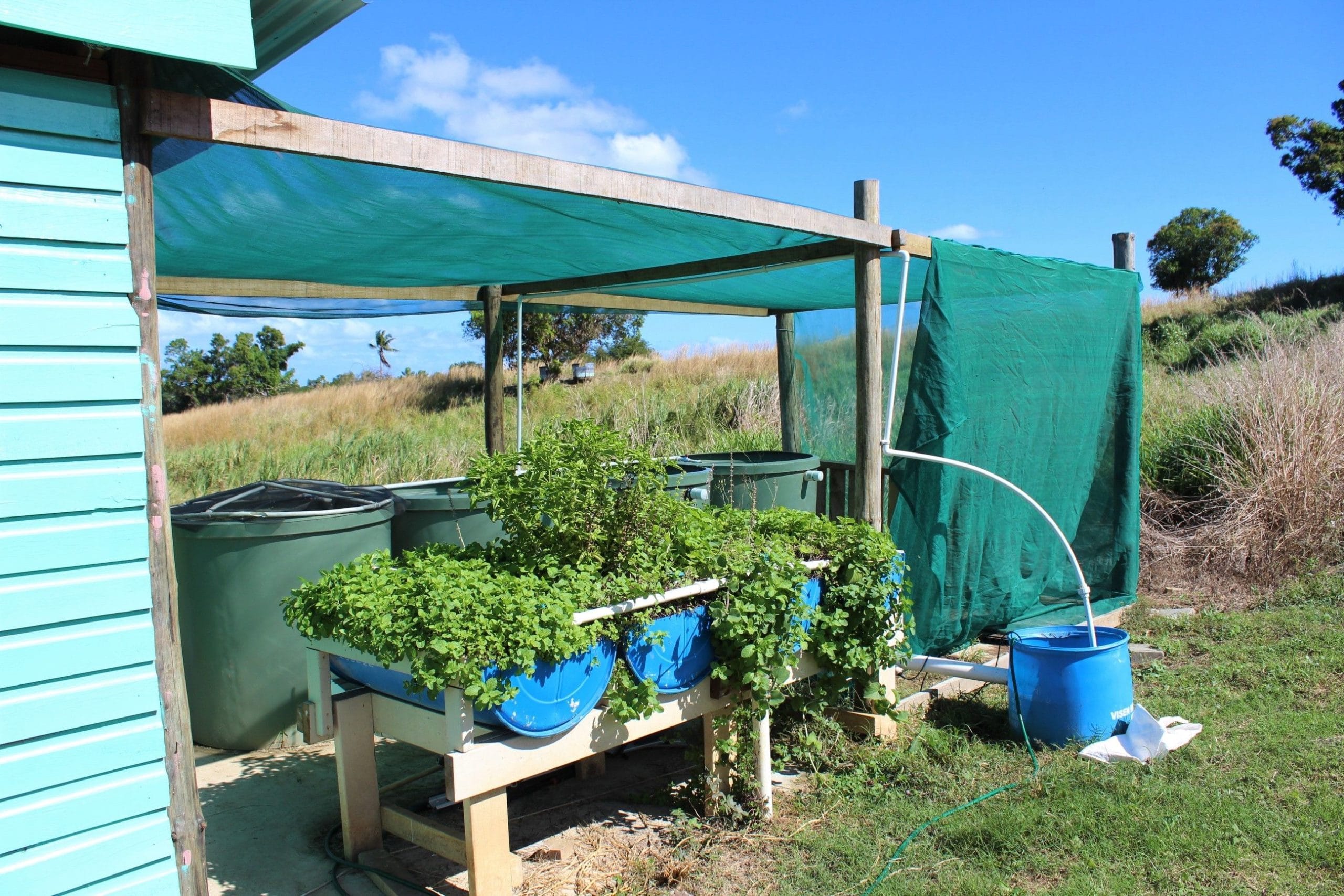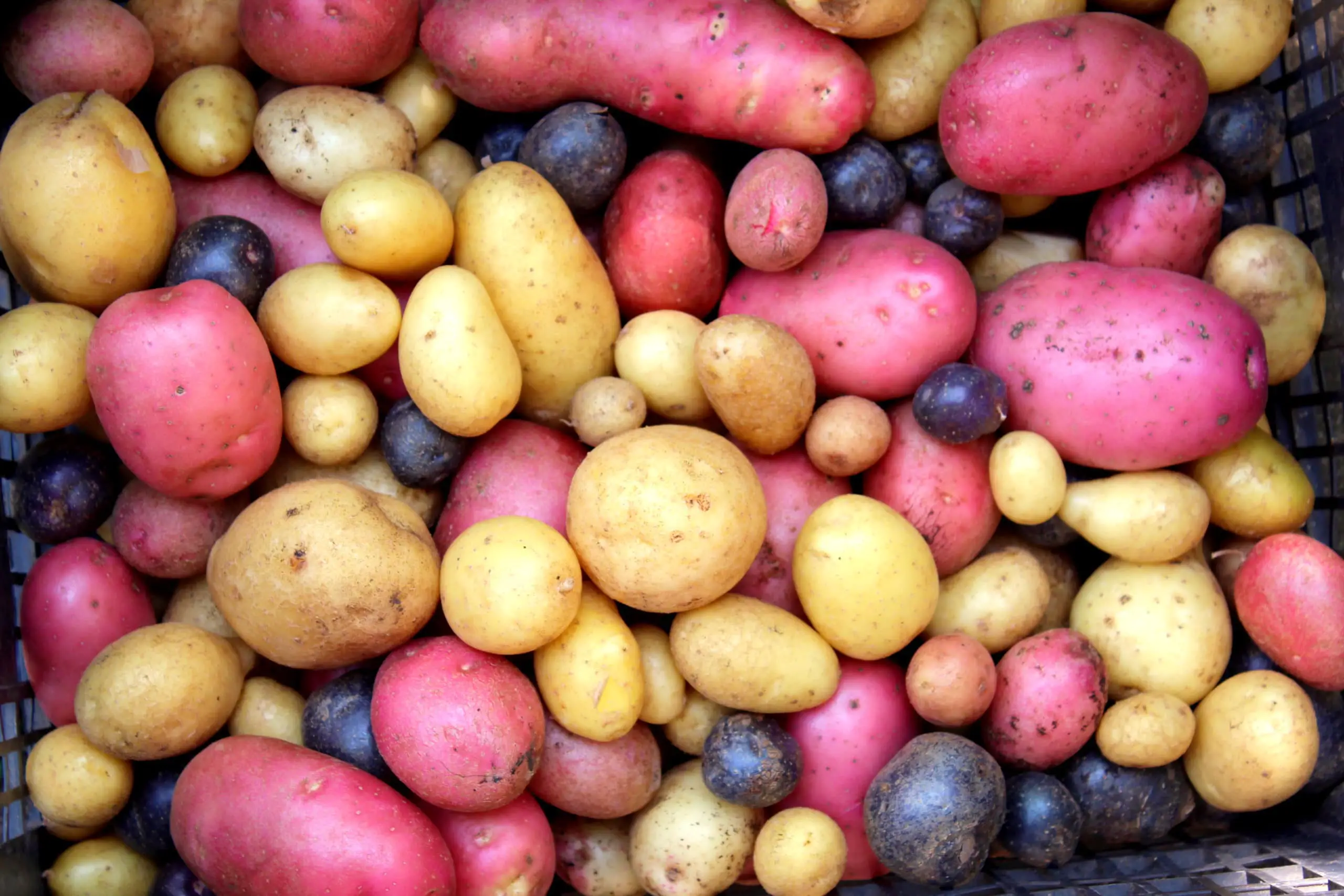Potatoes always top the list of the most versatile crops. You can bake, mash, boil, fry, or make it an ingredient of your favorite dishes. Many people want to grow potatoes to save on trips to the grocery and money.
What is the Art of Aquaponics?
Aquaponics is a method of growing vegetables and fruits in a hydroponic system together with the aqua-culture of fish. When you build a closed system of recirculating nutrients and water, your aquaponics system cleans the pond water and nourishes the potatoes, mushrooms, strawberries, or whatever you happen to be growing.
How To Grow Potatoes In Aquaponics?
It’s easy to grow potatoes in an aquaponics garden. All you need to start a potato patch in your aquaponics garden is to have the right setup, potato seeds, and the right spot.
Potatoes are grown in freshwater with the help of fish. Their waste goes to the hydroponic system and is absorbed by the potato plant. It serves as the nutrients for that plant. A filtration system then cleans the water and pumps it back into the fish tank.
Nutrient Content of Potatoes
Most homes never run out of potatoes. Potatoes are well-loved because they are nutritious and can be cooked in many ways.
Potatoes are widely known as being a great source of carbohydrates that supply energy to the body. Potatoes also are a source of micronutrients.
The USDA says that 100 grams of potatoes (boiled, with skin, and without salt) contains:
• Carbohydrates 20.1 grams
• Protein 1.9 grams
• Fat 0.1 gram
• Sugar 0.9 gram
• Calories 87
Potatoes also contain:
• Vitamin for healthy gums, teeth, and skin
• Fiber for aid in digestion
• B1, B6, and Folate for proper nerve function
• Iron
• Potassium
• Magnesium
Baked or boiled potatoes are perfect for a healthy diet.
Reasons to Grow Aquaponics Potatoes
Potatoes are easy to grow and an abundant harvest can be expected in a short time. Potatoes can be grown in a grow bag, plastic tub, or bucket. Thus, they can be easily grown in an aquaponics garden.
Potatoes can be grown from a seed potato. This can be done by planting a whole potato (small). You can also cut a large potato into smaller pieces, plant them, and wait for sprouts
Potatoes, on the surface, will appear as dormant buds. They will then sprout and become individual plants when planted in the right environment.
Potato Varieties for Aquaponics Gardens
Various varieties of potatoes can be grown in an aquaponics garden. Here are some of these varieties and the length of time it will take for them to mature and be ready for harvesting:

Preparing the Aquaponics Environment
While potatoes are easy to grow, and abundant harvest in an aquaponics system can be assured with the right growing conditions:
• Temperature
Potatoes are cool-season groups. The temperature in your aquaponics system should be maintained at between 60F – 70F. This will ensure the healthy and proper growth of the crop.
• pH Level
Potatoes can thrive in various pH conditions. They, however, thrive in slightly acidic conditions. Keep the pH of water in your aquaponics system between 5.3 and 6.0 to ensure good quality potatoes.
• Sun
Most potato varieties love the sun and should, therefore, be exposed to direct sunlight for at least 6 hours per day.
• Growing Medium
Similar to all root crops, potatoes will thrive in a wicking bed (a raised and self-watering garden bed) full of clay hydroton.
• Planting Potatoes
Seed potatoes should be planted 4 – 6 inches apart. Plant them with the cut side down and the eyes or buds facing up. Bury them under 2-inch clay balls.
• Harvesting Potatoes
Potatoes in your aquaponics garden should grow from 70 – 120 days (depending on the variety). When the leafy tops become dry, your potatoes are mature enough to harvest.
What Fish to Include
Growing potatoes alongside yellow pike or walleye are a perfect match. These fish and potatoes can tolerate varied temperatures although they will both prefer 700F.
Perch and Koi are also fish that can adjust well to aquaponics potato conditions.
How to Grow Potatoes Using Aquaponics

Follow these simple steps in growing your aquaponics potatoes to ensure an abundant harvest.
What you need:
Grow Bed
• Seed potatoes
• Growing Medium (perlite, vermiculite, and sphagnum peat moss
• Grow lights
• 5-Gallon Plastic Container (grow bed)
Aquaponics System
• Fish Tank (glass or plexi-glass / 20 gallons)
• Fish
• PVC Pipe – 3 feet (diameter should fit the outlet of the water pump)
• Taps
• Sprayer
• Hose with adapter
• Water Pump
• Light for fish tank
• Gravel
• Aquarium heater (optional)
• Electric Drill
• ¼-inch drill bit
• Sharp knife
• Litmus paper, pH meter, or pH test kit
1. Prepare the Seed Potatoes
Using a sharp knife, cut the seed potatoes into sections. Each section should contain 2 to 3 buds. Store the sectioned potatoes in a dark, cool place (400F) for 24 hours.
2. Prepare the Grow Bed
You can use a large storage bin or a 5-gallon plastic container and turn it upside down. A dark bin is a perfect choice.
Drill a hole in each side of the container using a ¼-inch drill bit. Holes should be one inch apart and 2 inches from the bottom of the container—Drill 3 rows of holes around the container’s circumference.
Drill the first hole at the end of the container and continue towards the other end. Make sure the holes are 1 inch apart.
Mix perlite and vermiculite (in equal proportions). Fill the container half full with the perlite-vermiculite mixture. Create 6 potato divisions on top of the mixture (equally spaced).
3. Construct the Aquaponics System
1. Wash the gravel.
2. Place the gravel on the bottom of the fish tank.
3. Install the water pump in the fish tank.
4. Place the grow bed atop the fish tank. The grow bed should be about 6-8 inches into the water of the growing reservoir of your aquaponics system. It would be best if you did not allow the water to flow to the top of the container freely.
5. Plug the pump and fill the fish tank with water.
6. Check the pH level of the water in the fish tank. Good quality potatoes will grow at a pH level of between 5.3 and 6.0. Adjust the pH level by adding “pH down” or “pH up” products.
7. Set aside the unit for 24 hours. This is to allow the chlorine to dissipate from the water.
8. Add the fish to the fish tank. Fish density in the first month should only be ½ inch of fish for every gallon of water. In the next month or when your aquaponics system has fully settled, you can add in more fish.
4. Plant your Potatoes
Place seed potatoes in your grow bed. Cover them with 2 inches of the planting mix. As the vines of the potatoes grow, you can add some more planting mix.
Allow the vines to reach the top of the growing bed so they can grow freely. When the vines die back, harvest the potatoes by first removing the sphagnum peat moss and then expel the potatoes from the grow bed.
Maintaining your Aquaponics System
Once the potatoes have been planted, fish food is the only thing that goes into the system every day. Give your small feedings twice daily. A pinch of fish food is good enough or a quantity that the fish can consume in 5 minutes.
Feed your fish dry flake fish food. You can also occasionally give them some treats. Bloodworm or brine shrimp will not only make them happy but healthier, too.
Some of the water in the fish tank will be absorbed by the potato plants. Some will evaporate. It is, therefore, necessary to refill the fish tank every few days.
Siphon out 10-15% of the tank water once a month and replace it with fresh water.
Simple Tips in How to Grow Potatoes in Aquaponics
Follow these simple tips to ensure the success of your aquaponics potatoes:
• Choose disease-free seed potatoes. Visit your local nursery and get seed potatoes from them.
• If you are planting whole potatoes, avoid planting the ones you brought from the grocery because they have been sprayed with sprouting inhibitors.
• Wait for 4-7 days before planting cut seed potatoes. This is to give time for the cut surfaces to heal so your seed potatoes will not rot.
• Be wary of potato blight- a common fungal disease in potatoes. Make sure to have a consistent water flow because blight develops quickly in wet conditions.
• Avoid exposing potato tubers to direct sunlight. Green tubers have higher levels of solanine. Never eat green tubers because consuming solanine can make you sick.
• Position your aquaponics system in full sun or if not possible, install some grow lights. To ensure an abundant and good quality harvest, your potato plants require 6 – 8 hours of direct sun daily.
Many first-time growers of aquaponics potatoes are so engrossed watching over their potato plants; they forget to feed the fish. Make sure to provide them with high-quality fish food!
Final Thoughts
Like planting potatoes in soil, it is also easy to learn how to grow potatoes in aquaponics. Follow the simple tips explained in this article, and within a few weeks, you will have an abundant supply of fresh aquaponics potatoes. Precisely the same as the ones you get at your supermarket – maybe with more flavour; and in economic abundance! What’s stopping you?
Jenny Marie
Tribal Writer
Edited By
Patricia Godwin

